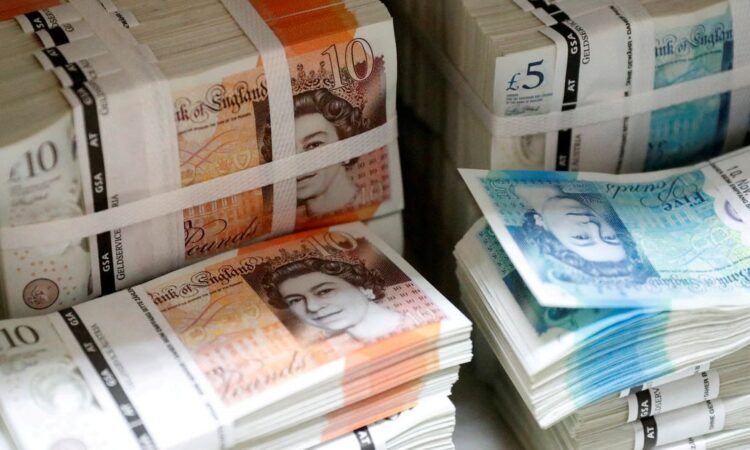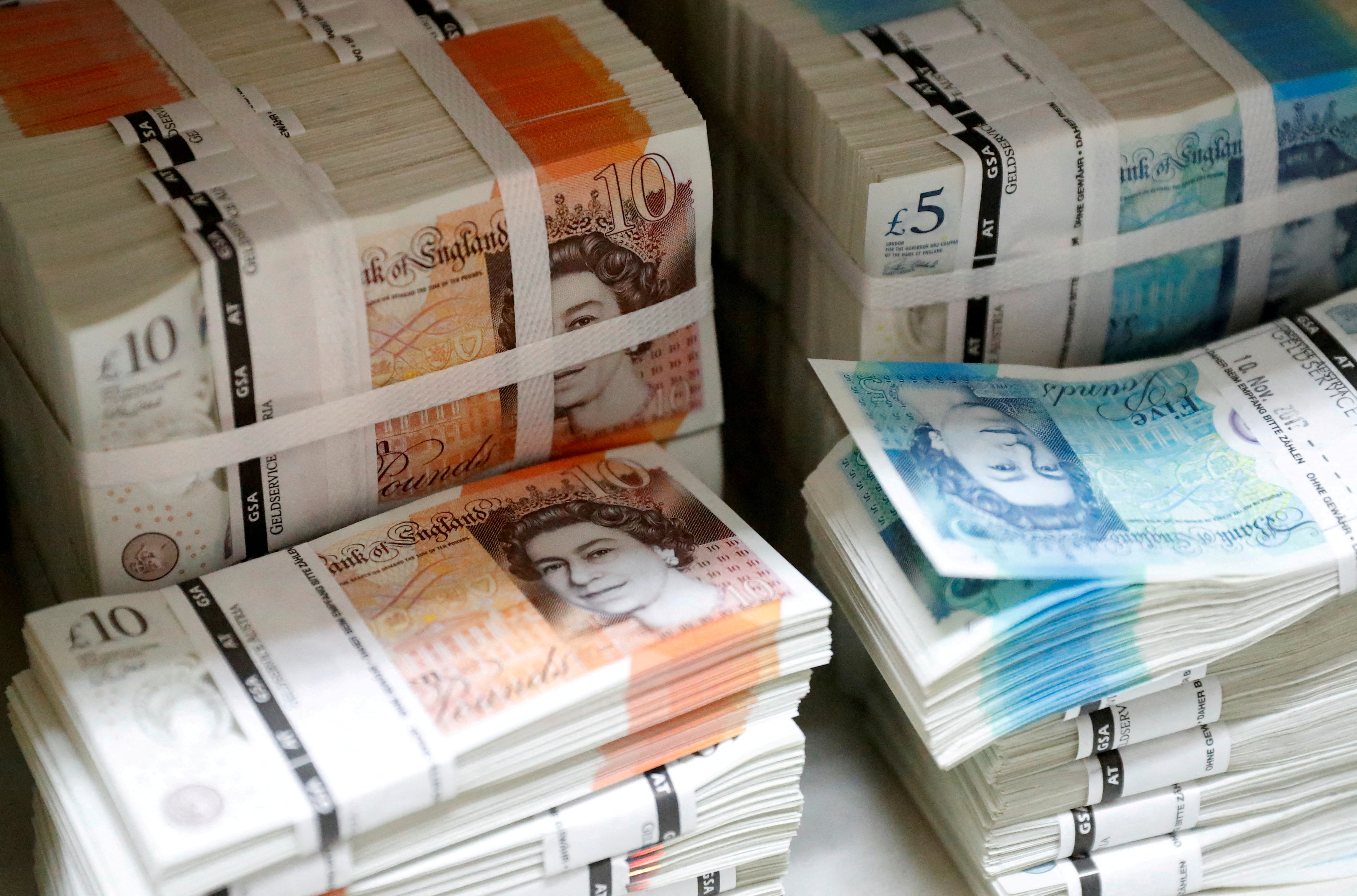

Wads of British Pound Sterling banknotes are stacked in piles at the Money Service Austria company’s headquarters in Vienna, Austria, November 16, 2017. REUTERS/Leonhard Foeger//File Photo Acquire Licensing Rights
LONDON, Sept 1 (Reuters) – The British pound held steady on Friday as data showed that previous interest rate rises are beginning to weigh on housing and manufacturing, but official figures showed the economy fared better than previously thought through the COVID-19 pandemic.
At 1026 GMT, sterling was last flat against the dollar at $1.2674, within its recent month-long trading range of $1.2548-$1.28175.
It was little changed against the euro, with the single currency last buying 85.58 pence .
British factories suffered their weakest month since early in the COVID-19 pandemic, the S&P Global/CIPS UK manufacturing Purchasing Managers’ Index showed on Friday, with orders shrinking dramatically due to the rise in interest rates.
“The index was dragged down by a significant decline in production, as the impact of rising interest rates on customer demand continued to grow,” said Martin Beck, chief economic advisor to the EY Item Club.
“Growing evidence of a weakening economy and disinflationary pressure mean the possibility that the (Bank of England’s) MPC (Monetary Policy Committee) will choose to keep rates unchanged is looking more plausible.”
The BoE has raised its key interest rate 14 times since December 2021 to 5.25%, its highest level in 15 years.
Markets still expect another increase this month to 5.5% as underlying price pressures have been slow to fall.
Britain’s housing market is also starting to feel the pinch from previous rate hikes, with house prices suffering their biggest annual decline since July 2009, according to mortgage lender Nationwide.
“The housing market is one of the more evident channels where we see the pass-through from interest rate rises,” said Kirstine Kundby-Nielsen, analyst at Danske Bank.
“We’re seeing a lot of housing indicators pointing in the same direction,” Kundby-Nielsen added, who expects the euro to gain to 88 pence over the next 12 months as Britain’s economy remains sluggish.
But it’s not all doom and gloom as the Office for National Statistics revised upwards its estimate for the size of the UK economy, saying it was 0.6% larger in the fourth quarter of 2021 than in the final quarter of 2019, compared with an earlier estimate that it was 1.2% smaller.
Britain had been languishing at the bottom of the Group of Seven advanced economies in terms of its recovery from the pandemic, but if the upward revision carries into the latest data, this would place its recovery ahead of Germany and just behind France and Italy.
Reporting by Samuel Indyk, Editing by Louise Heavens
Our Standards: The Thomson Reuters Trust Principles.




